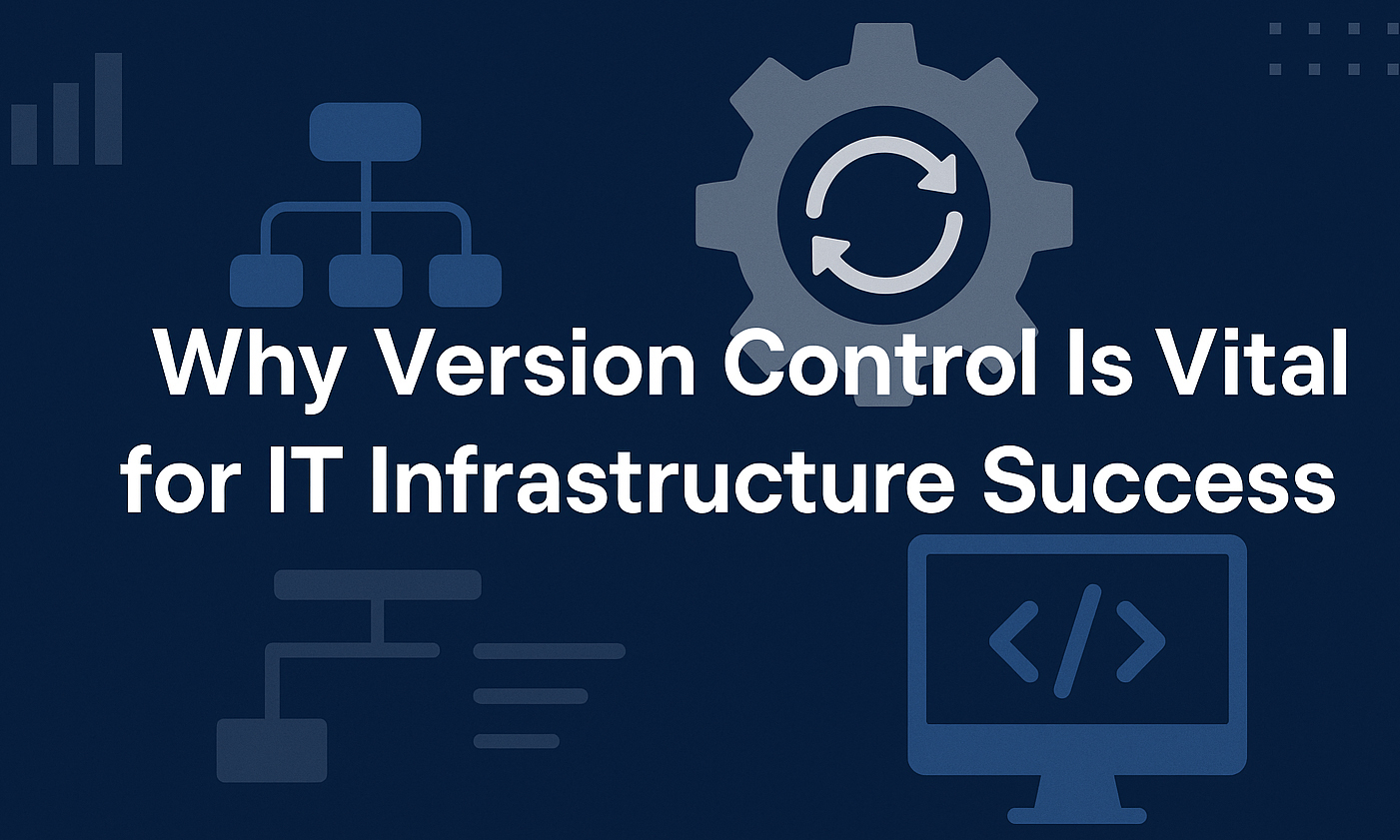No products in the cart.
 Why Version Control Matters for Infrastructure Teams
Why Version Control Matters for Infrastructure Teams
In the world of IT infrastructure, precision and consistency are non-negotiable. Version control acts as the silent powerhouse behind the scenes—fueling collaboration, reducing errors, and ensuring operational continuity. Whether managing servers, networks, or cloud configurations, version control introduces a level of discipline that transforms reactive firefighting into proactive strategy. For infrastructure teams navigating complex environments, it’s more than a convenience—it’s an essential framework.
Version Control: More Than Code Management
While developers have long relied on version control to manage source code, IT infrastructure teams are increasingly adopting the same principles to manage configurations, scripts, documentation, and automation routines. At its core, version control captures every change, tags it with metadata, and stores it in a chronological repository. This practice offers visibility into what was changed, when, and by whom—forming a digital ledger that keeps everyone on the same page.
Why Versioning Is Crucial in the IaC Era
The shift toward Infrastructure as Code (IaC) has intensified the need for robust version control. Tools like Terraform, Ansible, and Puppet allow infrastructure to be described in code—declarative scripts that define how environments should be built and maintained. These files live in repositories where version control ensures integrity, tracks evolution, and supports rollback if a deployment goes sideways. Without versioning, managing IaC at scale is like navigating a storm without a compass.
Version Control for Seamless Team Collaboration
Modern IT infrastructure is a team sport involving DevOps engineers, network architects, cybersecurity analysts, and cloud administrators. Version control facilitates concurrent workflows, preventing overlap and ensuring coordinated progress across teams. By synchronizing efforts in a shared repository, conflicts are minimized, and contributions are transparent. No more overwriting someone else’s updates or guessing which configuration is the latest—it’s all documented and traceable.
Audit Trails and Accountability: Who Changed What and Why?
Version control doubles as an accountability mechanism. Every change is timestamped and attributed, forming a transparent trail of activity. This audit history is invaluable during security investigations, system failures, or compliance checks. If a deployment breaks, teams can trace the root cause with forensic precision. If regulators come knocking, detailed logs offer evidence of change control protocols in action.
Rollback Ready: Instant Recovery from Broken Builds and Configs
Even the best-laid configurations can unravel unexpectedly. Version control provides a safety net by allowing teams to revert to the last known good state with minimal disruption. Whether it’s undoing a faulty network script or restoring a stable server config, the ability to roll back swiftly is a critical part of any disaster recovery strategy. It mitigates the impact of failure, turning it into a brief deviation rather than a major crisis.
Syncing Environments with Smart Branching
Branching isn’t just for software teams. Infrastructure projects benefit enormously from using branches to separate changes intended for development, staging, and production environments. This structure helps isolate testing from live deployments and enables parallel workstreams without introducing instability. Validating changes prior to merging is essential for maintaining the operational integrity of mission-critical infrastructure
Integrating Version Control with CI/CD Pipelines
Continuous Integration and Continuous Deployment (CI/CD) pipelines hinge on version-controlled files. Automated systems watch repositories for changes, trigger validations, and roll out updates in real time. Version control acts as the nervous system of CI/CD, ensuring that every automation trigger is based on auditable, approved, and tested configurations. This not only speeds up delivery but enforces a culture of discipline and repeatability.
Security and Compliance: Version Control as a Guardrail
Cybersecurity and regulatory compliance demand rigorous control over infrastructure changes. Version control offers granular permission settings, branch protections, and enforced code reviews—all of which fortify change management. By logging every interaction, these systems help organizations demonstrate due diligence in audits and prevent unauthorized alterations that could lead to vulnerabilities.
Tool Talk: Choosing the Right Version Control System for Infrastructure Needs
Not all version control systems are created equal. Git remains the most popular due to its flexibility, branching model, and widespread integration. However, alternatives like Mercurial or Perforce may be better suited for large binaries or more centralized workflows. Key considerations include scalability, access control, ease of integration with CI/CD tools, and community support.
Real-World Scenarios: Version Control Saves the Day
In one enterprise case, an update to a production firewall rule inadvertently blocked all outbound traffic. Thanks to version control, the team quickly identified the misconfigured line, reverted to the previous rule set, and restored connectivity within minutes. In another scenario, a startup scaled its Kubernetes clusters using versioned Helm charts, avoiding costly misconfigurations and downtime during a critical product launch. These stories underscore how version control transforms theoretical best practices into operational resilience.
Conclusion:
Version control is essential to IT infrastructure, enabling traceability, collaboration, fast recovery, and compliance. As infrastructure evolves rapidly, it provides the structure and security needed to scale with confidence. More than code storage, it fosters continuous improvement and controlled innovation. Integrating version control ensures agility and stability making it a strategic necessity, not a luxury.
Stay updated! Follow us on social media! Facebook, Twitter, LinkedIn
Check out our newest blog entry ( Why IT Teams Are Moving to AIOps)
Subscribe to get free blog content to your Inbox



 Why Version Control Matters for Infrastructure Teams
Why Version Control Matters for Infrastructure Teams